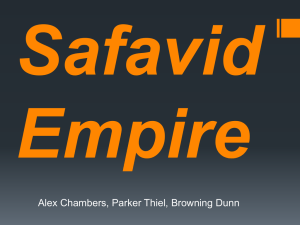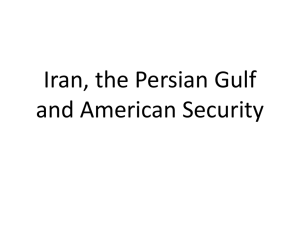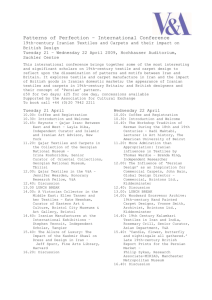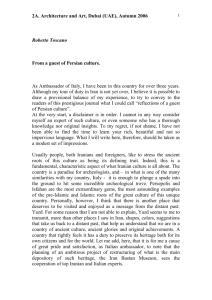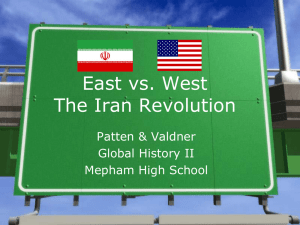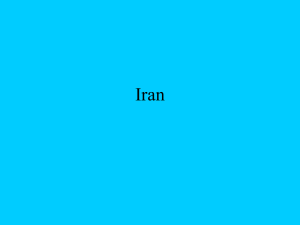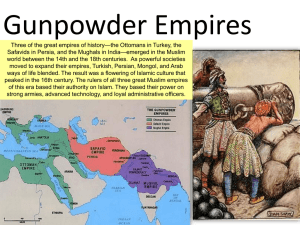Class Notes - Safavid Empire
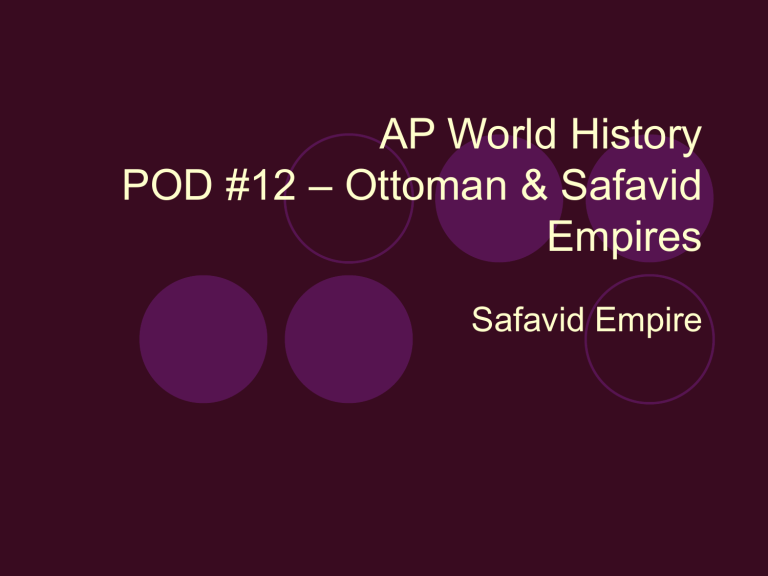
AP World History
POD #12 – Ottoman & Safavid
Empires
Safavid Empire
Class Discussion Notes
Bulliet et. al. – “The Safavid
Empire, 15021722” , pp. 541-545
Safavid Empire
“The Safavid Empire of Iran resembled its long time Ottoman foe in many ways: It initially relied militarily on cavalry paid through land grants; its population spoke several different languages; and it was oriented inward away from the sea. It also had distinct qualities that to this day set Iran off from its neighbors: it derived part of its legitimacy from the pre-Islamic dynasties of ancient Iran, and adopted the Shi’ite form of
Islam” (Bulliet, p. 541)
Ismail
Ismail was the ultimate victor in the region during and intense and complicated power struggle
He was a boy of Kurdish, Iranian and Greek ancestry who proclaimed himself Shah at the age of 16
Declared allegiance to Shi’ite Islam, which revered the family of Muhammad’s son-in-law Ali
This decision created a deep divide between
Iran and its Sunni neighbors
The actions of Ismail turned Iran into a separate country for the first time since the Islamic caliphate in the 7 th century
Persian Culture
Differences between Iran and its neighbors were long in the making
Persian – written in Arabic script from the 10 th century emerged as a second Islamic language
Iranian scholars and writers normally read
Arabic, as well as Persian, and used Arabic phrases in their writing
The Arabs were less inclined to learn Persian
Iran became known for painted and molded mosaic tiles and carpet design and production
Iranian Isolation & Interaction
After the Mongols destroyed Baghdad, the capital of the Islamic caliphate, in 1258,
Iran developed largely on its own, having more extensive contacts with India – where Muslim rulers favored the Persian language – than with the Arabs.
Hidden Imam
Shi’ite doctrine taught that all worldly rulers, regardless of title, are temporary stand ins for the “Hidden Imam”
The Hidden Imam was said to be the 12 th descendent of
Ali, the prophet Muhammad’s cousin and son-in-law, who disappeared as a child in the 9 th century
Some believed the faithful should calmly and quietly accept the world as it was and wait for the return of the
Hidden Imam
Some claimed they should have a greater leadership role in political affairs because they were best qualified to fulfill the wishes of the Hidden Imam
As a result of this idea, religious scholars played a prominent role in Iranian society (and still do today) and they have never become subordinate to the secular government
Military Crisis
The Safavids, much like the Ottomans found it difficult to pay and supply troops armed with firearms
Cannons were needed in greater supply by the late 16 th century to hold off the Ottoman and Uzbeks enemies
Like the Ottoman cavalry the Safavid warriors were not willing to exchange their traditional bow and arrow for modern weaponry
Shah Abbas was forced to create an army of slaves armed with guns able to fight year round – this army was initially made up of Christian converts to Islam who were taken during raids on Georgia in the Caucasus
Economic Crisis
Inflation caused by the influx of cheap silver
Overland trade through the empire declined due to mismanagement of the silk monopoly after the death of
Shah Abbas in 1629
There was no money left to pay for the military, as well as, the government bureaucracy
The government was unable to remove the nomads from their lands as a means to regain control of the taxes
1722 – the government was so weak and ineffective that it was overrun by an army of Afghans who were able to capture Isfahan and end Safavid rule
